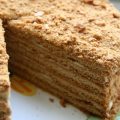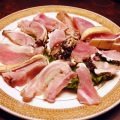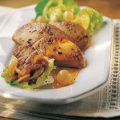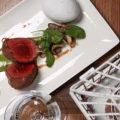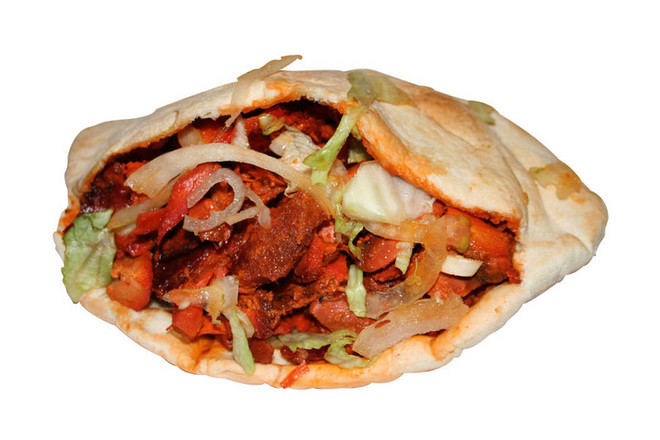 Turkish cuisine recipes with photosEveryone knows thatthe best cuisine in the world is French, followed by Chinese. Or vice versa, other connoisseurs believe. Italian is named next, I have even seen Russian cuisine in third place. But does anyone know that Turkish cuisine is arguing for third place, and not without reason? Turkish cuisine arose as a fusion of Asian, European, and African cuisines, and was formed under the influence, first of all, of the institution of palace cuisine at the courts of the sultans of the Ottoman Empire. Imagine: about 13 thousand cooks worked in the Topkali Palace in Istanbul in the 17th century! And the military elite - the Janissaries - even had titles associated with the cuisine - "soup cook". division commander, he had officers under his command: "cooks", "pancake bakers". No, they did not cook soup, they only ate it, these are just military ranks. The traditional respectful attitude to food also played a big role in Turkish cuisine. Turkish cuisine is a feast for the stomach, but this is especially noticeable in desserts. Turkish sweets are countless: "Braided turban", "Female thigh", "Nightingale's nest", "Vizier's finger". The most famous is "Braid Turban", "Female thigh", "Nightingale's nest", "Vizier's finger". baklava (thin cakes sprinkled with nuts and covered with sugar syrup). Lokma is also good - fried pieces of yeast dough with syrup. What can we say about the familiar Turkish delight, halva, marzipan - all of this is served with drinks, tea, sherbet. But coffee, despite the fame of Turkish coffee, is rarely consumed. No, I can't resist naming a few more dishes of this magical cuisine: "Imam bayildi", which means "The imam fainted". it seemed so delicious to him, "The Sultan Likes It", "The Wounded Turban", "Turkish Bliss", "Star of the Harem" - the inexhaustible imagination of Turkish chefs! What a pity that I can't name these dishes in Turkish! It's like a song, like a magnificent hymn to wonderful food! Yes, I'm learning Turkish just for this...
Turkish cuisine recipes with photosEveryone knows thatthe best cuisine in the world is French, followed by Chinese. Or vice versa, other connoisseurs believe. Italian is named next, I have even seen Russian cuisine in third place. But does anyone know that Turkish cuisine is arguing for third place, and not without reason? Turkish cuisine arose as a fusion of Asian, European, and African cuisines, and was formed under the influence, first of all, of the institution of palace cuisine at the courts of the sultans of the Ottoman Empire. Imagine: about 13 thousand cooks worked in the Topkali Palace in Istanbul in the 17th century! And the military elite - the Janissaries - even had titles associated with the cuisine - "soup cook". division commander, he had officers under his command: "cooks", "pancake bakers". No, they did not cook soup, they only ate it, these are just military ranks. The traditional respectful attitude to food also played a big role in Turkish cuisine. Turkish cuisine is a feast for the stomach, but this is especially noticeable in desserts. Turkish sweets are countless: "Braided turban", "Female thigh", "Nightingale's nest", "Vizier's finger". The most famous is "Braid Turban", "Female thigh", "Nightingale's nest", "Vizier's finger". baklava (thin cakes sprinkled with nuts and covered with sugar syrup). Lokma is also good - fried pieces of yeast dough with syrup. What can we say about the familiar Turkish delight, halva, marzipan - all of this is served with drinks, tea, sherbet. But coffee, despite the fame of Turkish coffee, is rarely consumed. No, I can't resist naming a few more dishes of this magical cuisine: "Imam bayildi", which means "The imam fainted". it seemed so delicious to him, "The Sultan Likes It", "The Wounded Turban", "Turkish Bliss", "Star of the Harem" - the inexhaustible imagination of Turkish chefs! What a pity that I can't name these dishes in Turkish! It's like a song, like a magnificent hymn to wonderful food! Yes, I'm learning Turkish just for this...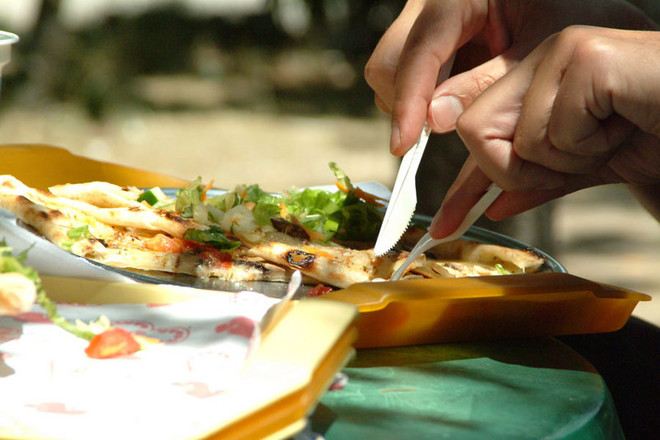 But we're getting ahead of ourselves.Let's eat Turkish style. Do you have time? Then go ahead, because a Turkish lunch can last 4-5 hours. First, you will be offered meze - appetizers. Meze includes olives, pieces of honeydew melon, fish, fried mussels, pies, squid, deviled eggs, yogurt sauce with garlic and fresh bread - add the rest yourself. The meze is followed by the main courses, first of all, kebabs, which are cooked on coals, sometimes in a dish, but without water. Oh, what magic - these kebabs, prepared from the excellent meat of breeding sheep and cattle raised on open pastures. Just for God's sake, don't call kebabs shashlik. The main course can also be kefte - minced raw meat mixed with egg and spices, which can be served in the form of balls, both fried and raw. And don't grimace, try it first! It is unlikely that you will ever want anything else! However, if you are offered fish, of course, you will not refuse. The most popular way of cooking is frying on charcoal, which gives the fish a unique aroma. You can try red mullet, swordfish, octopus, cuttlefish, oysters, skate, red bream, lobsters - all the freshest. Anchovy is considered the queen of fish. In Turkey, they know more than 40 ways to cook it (even a dessert from it). For a side dish - of course, pilaf - this is a dish of rice and wheat grains, served as a side dish to meat and vegetable dishes. What prose is this - vegetable dishes! No, these are not dishes! This is something divine, I don't know from which god. Probably, they all invisibly guide the hands of Turkish cooks who compose this divine miracle!
But we're getting ahead of ourselves.Let's eat Turkish style. Do you have time? Then go ahead, because a Turkish lunch can last 4-5 hours. First, you will be offered meze - appetizers. Meze includes olives, pieces of honeydew melon, fish, fried mussels, pies, squid, deviled eggs, yogurt sauce with garlic and fresh bread - add the rest yourself. The meze is followed by the main courses, first of all, kebabs, which are cooked on coals, sometimes in a dish, but without water. Oh, what magic - these kebabs, prepared from the excellent meat of breeding sheep and cattle raised on open pastures. Just for God's sake, don't call kebabs shashlik. The main course can also be kefte - minced raw meat mixed with egg and spices, which can be served in the form of balls, both fried and raw. And don't grimace, try it first! It is unlikely that you will ever want anything else! However, if you are offered fish, of course, you will not refuse. The most popular way of cooking is frying on charcoal, which gives the fish a unique aroma. You can try red mullet, swordfish, octopus, cuttlefish, oysters, skate, red bream, lobsters - all the freshest. Anchovy is considered the queen of fish. In Turkey, they know more than 40 ways to cook it (even a dessert from it). For a side dish - of course, pilaf - this is a dish of rice and wheat grains, served as a side dish to meat and vegetable dishes. What prose is this - vegetable dishes! No, these are not dishes! This is something divine, I don't know from which god. Probably, they all invisibly guide the hands of Turkish cooks who compose this divine miracle!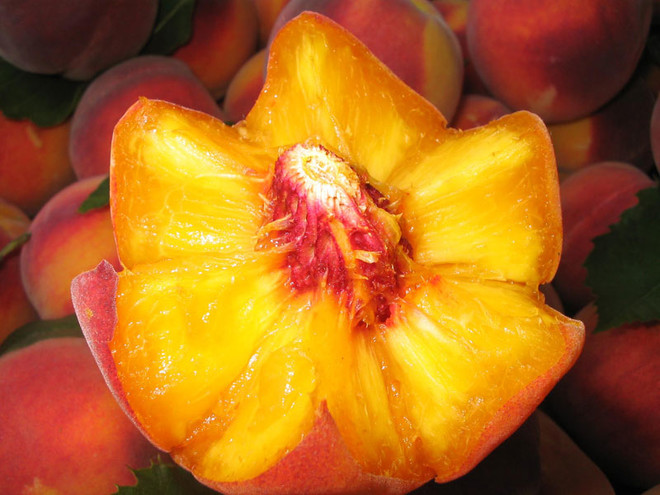 Vegetable products in Turkish cuisine are divided into twotype: stewed in their own juice with olive oil and stuffed, then fried (or baked). All stuffed vegetables are called "dolma" (from the verb "doldurmak" - to fill). Minced meat and rice are popular; the most beloved dolma is made from green bell peppers with rice. As for vegetables, no Turk will refuse zeytinyali - stewed green beans with tomatoes and onions. Contrary to popular belief, seasonings and spices in vegetable (and other) dishes are used very sparingly. Mint or dill are combined with zucchini, parsley - with eggplant. Lemon and yogurt balance the taste of olive oil, meat or vegetables. Cold vegetable dishes are especially tasty. We have already mentioned desserts. We have mentioned them... Yes, we can and should talk about them for hours! But, alas, the time is up. Try Turkish cuisine! "Sherefe!" "Your health!"
Vegetable products in Turkish cuisine are divided into twotype: stewed in their own juice with olive oil and stuffed, then fried (or baked). All stuffed vegetables are called "dolma" (from the verb "doldurmak" - to fill). Minced meat and rice are popular; the most beloved dolma is made from green bell peppers with rice. As for vegetables, no Turk will refuse zeytinyali - stewed green beans with tomatoes and onions. Contrary to popular belief, seasonings and spices in vegetable (and other) dishes are used very sparingly. Mint or dill are combined with zucchini, parsley - with eggplant. Lemon and yogurt balance the taste of olive oil, meat or vegetables. Cold vegetable dishes are especially tasty. We have already mentioned desserts. We have mentioned them... Yes, we can and should talk about them for hours! But, alas, the time is up. Try Turkish cuisine! "Sherefe!" "Your health!"

Making Money with Desserts: Success Stories
Evgeniya Polischuk (Fedutinova) instagram:@evgeniyafedutinovavk.com/janeshomebaking– It all started with baking for family and friends. Gradually, I started posting photos of my baked goods on Instagram – and orders started coming in. I made my first custom-made cake on October 13, 2014, and a little earlier I started making macaroons and cupcakes. You could say that the business “found me”, I am very […]

Soups are cold recipes with photos
Cold cucumber soup with yogurt and lemonsorbet from the chef of the restaurant La Taverna Alexander Zhurkin Photo: Getty Images Ingredients: Plain yoghurt – 125 g Cucumber – 150 g Lemon/lime sorbet – 50 g Cocktail shrimp – 24 g Fresh ginger juice – 1 g Lime juice – 5 g Fresh orange juice – 5 g Parsley – 1 g Pink pepper – 1 g Watercress – […]

barbeque kebab
Pork tenderloin in glaze Photo:Dmitry Bayrak/dbstudioPreparation time: 20 minutes + marinating time.Calories: 454 kcal per serving.For 4 servings: 4 pork tenderloins (approximately 300 g each), 1 onion, 2 cloves of garlic, 1 tsp. lemon zest, 1 tsp. lemon juice, a pinch of ground cumin, coriander and turmeric, 1 tbsp. vegetable […]

Pierre Duacan: dietary recipes: Ducane diet
Beetroot soup Photo:Season’S, Luxury Hotels RepresentationYou will need:· Boiled beetroot – 60 g· Fresh cucumbers – 20 g· Red radish – 20 g· Green onions – 10 g· Egg – 1 pc.· Drinking mineral water – 200 g· Salt – 1 gPreparation:· Boil the egg and beetroot.· Grate the cucumbers, radish and part of the beetroot. Put everything […]
